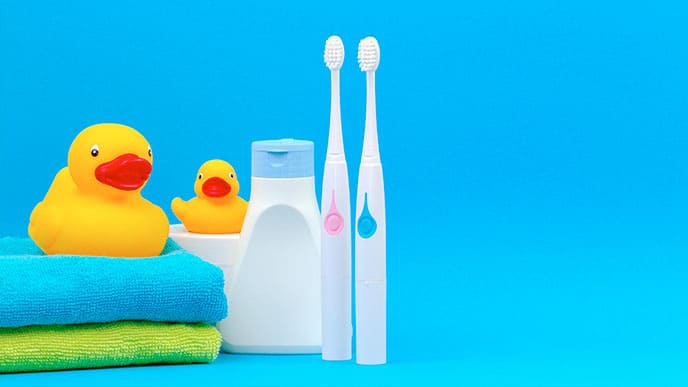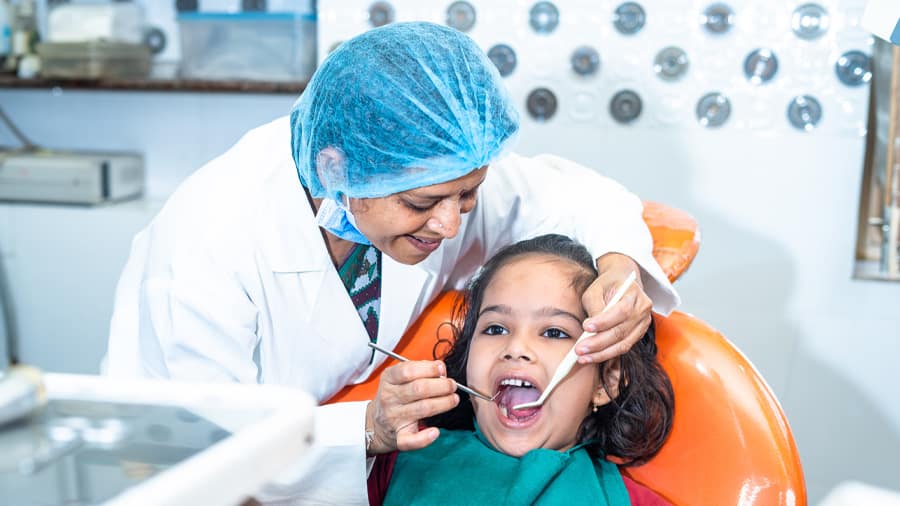-
-

TEETH WHITENING
What Is Stannous Fluoride Toothpaste?Stannous fluoride toothpaste helps prevent cavities, reduce sensitivity, fight plaque, and support daily gum and enamel health.

Selecting Dental Products
Best Toothpaste in India: Five Dentist-Recommended TypesToothpastes today are formulated to meet your every dental need and come in many flavours. Have your dental professional suggest the best toothpaste in India.
-
Science & Innovation
- ORAL HEALTH CHECK
- PRODUCT MATCH
- Colgate® | Toothpaste, Toothbrushes & Oral Care Resources
- Oral Health
- Selecting Dental Products
- Is An Electric Toothbrush For Kids Right For My Child?


Anything that boosts your child's interest in oral care can be helpful in preventing plaque and cavities. An electric toothbrush for kids may be the answer for a child who doesn't like to brush.
Should My Child Use an Electric Toothbrush?
Using an electric toothbrush has many advantages. According to the Indian Dental Association electric or power-assisted
toothbrushes are a fine alternative to manual brushes. They are
especially useful for people who don't use proper brushing techniques. However, for children who are reluctant brushers or have difficulty brushing with a manual brush, an electric brush may be easier or more comfortable to use. If you are unsure which brush is best for your child, discuss it with your dentist at your next dental exam.
In addition to keeping your child's teeth clean, a children's toothbrush has some fun perks. Many powered brushes come in a variety of character-themed styles which can entice children to practice good oral health care.
How to Pick the Right Toothbrush
As with a standard brush, it is important to select the right size and style for your child. Be sure to select an electric toothbrush with a child-sized head so that it fits properly in your child's mouth and can reach all the way to the back teeth comfortably. For younger children and toddlers, be sure to select soft bristles, which are gentler on gums and especially recommended if your little one is still cutting new teeth.
Another important contributor to successful brushing is letting your child select the brush. For children who are reluctant brushers, picking their own brush will empower them in the process. You may even want to keep more than one brush available at home so that they can decide between them each brushing session.
Proper Technique Is Key
Remember that an electric toothbrush cannot do all the work on its own. You will still need to help your child practice proper brushing technique to prevent cavities. Show your child how to place the brush at a 45 degree angle toward the gumline. Even with the movement of the powered brush, your child will still need to move the brush back and forth against the teeth and gums using short, gentle strokes.
Proper maintenance of a manual and an electric toothbrush is identical except for the need to charge the latter. Rinse your child's brush well after each use, and store it upright. Replace toothbrushes every three months and after a cold, flu or other infection throw that toothbrush out immediately. A child's toothbrush often needs to be replaced more frequently than an adult's brush, especially if your child has a tendency to chew on the brush.
This article is intended to promote understanding of and knowledge about general oral health topics. It is not intended to be a substitute for professional advice, diagnosis or treatment. Always seek the advice of your dentist or other qualified healthcare provider with any questions you may have regarding a medical condition or treatment.
ORAL HEALTH QUIZ
What's behind your smile?
Take our Oral Health assessment to get the most from your oral care routine
2.3 billion
people worldwide suffer from tooth decay
ORAL HEALTH QUIZ
What's behind your smile?
Take our Oral Health assessment to get the most from your oral care routine
2.3 billion
people worldwide suffer from tooth decay
Related Articles

Dental visits
What Is A Paediatric Dentist?Visit Colgate now and learn about the difference between pediatric dentists and general dentists, and the benefits pediatric dentists provide.

Dental visits
What is a Pediatric Dentist?
Brushing and flossing
When to Start Using Toothpaste for Your BabyWhen should you start brushing my baby's teeth with toothpaste? Visit Colgate now and learn about the steps for keeping your baby's teeth in perfect condition.
Related Products

Helping dental professionals
More professionals across the world trust Colgate. Find resources, products, and information to give your patients a healthier future







